API (Application Programming Interface) is important for allowing seamless communication between different software applications. It lets businesses integrate various services and improve user experiences. You can develop a web application, mobile app, or integrate third-party services through a reliable API. If you’re wondering which framework to choose, you have come to the right place. For API development, Laravel is the go-to PHP framework. It is popular for its user-friendliness, simplicity, and powerful features. In this blog, we will discuss Laravel API development, its core features, and Laravel best practices. It will help you create highly secure, scalable, and high-performing APIs.
What is Laravel? Why Laravel for API Development?
Laravel is the open-source PHP framework which is used to develop web and mobile applications. It is feature-rich, user-friendly, and has easy-to-use syntax. Laravel is a full-stack solution, and by using it, developers can build everything from small applications to large-scale enterprise solutions.
Even Laravel simplify the API creation using Laravel new features such as route handling, Eloquent ORM, and tools such as Passport and Sanctum for authentication. Due to its expressive syntax, developers do not need to spend more time on coding boilerplate logic. Therefore, they can spend more time on building features. Here are a few reasons to use Laravel for APIs.
- Laravel’s simple and easy-to-use syntax help increase developer’s productivity.
- It has built-in routing, testing, and authentication tools, which can simplify the creation of APIs.
- Laravel can easily handle large-scale and high-traffic applications.
- Its vast community support makes Laravel highly reliable.
Core Features of Laravel for API Development
Laravel provides impressive features, especially for API development. Let’s understand them in brief.
| Feature | Meaning | Purpose |
| Eloquent ORM | It’s an object-relational mapping system that makes database interactions simple. | It improves productivity and simplifies data management. |
| Middleware | It acts as the bridge between a request and its corresponding response. | Middleware lets developers implement custom functionalities, authentication, logging, etc. It improves the overall flexibility and modularity of the API project. |
| RESTful routing | It’s a flexible routing system for defining API endpoints. | It enables the clean and logical API creation. Also, offers clean and organized routes. |
| Sanctum and Passport | Built-in tool for API authentication | Ensures secure access |
| Rate Limiting | Limits API requests | It improves API security |
| API Resource Classes | It simplifies the transformation of models to JSON responses | Offers clean and consistent responses |
| Queues and Jobs | In-built support for background jobs and task queues | It handles long-running operations efficiently. |
| Testing Tools | Tools for API testing | These tools ensure code reliability. |
Best Practices and Core Principles for Laravel API Development
While building API with Laravel, you must follow certain core principles and Laravel best practices. These best practices and guidelines help you produce an organized, clean, and secure codebase. Here are some best practices for 2025 that will help you enhance your API development experience.
1. Structure Routes Efficiently
Route structure is the foundation of RESTful API design. It permits clear and expressive API route definitions. Ensure routes have resource-based naming conventions. It promotes clarity. You should use Route Route::resource() for effective and quick CRUD operations quickly. The routes must reflect the actions going to be performed, like /users/{id}.
Here is an example of how to define routes in Laravel.
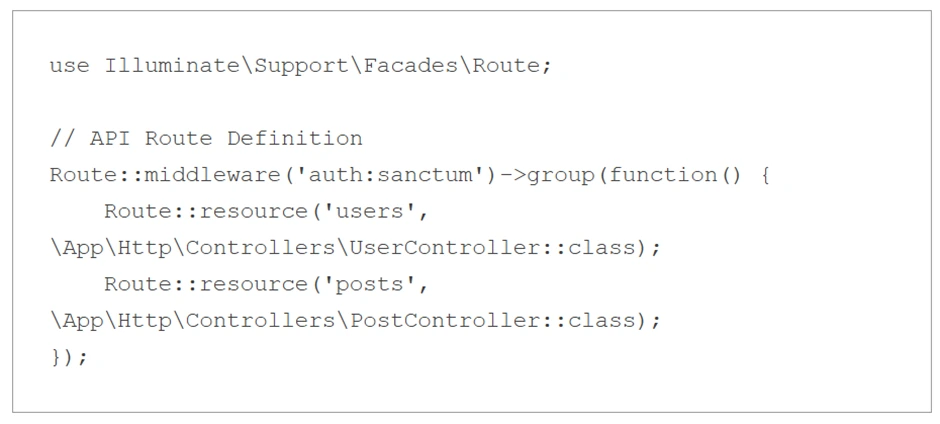
The Route::resource() method makes route management easy, consistent, and efficient. This method maps the HTTP routes to its relevant controller methods automatically.
2. Controller Logic Must Be Clean
Generally, controllers handle the application’s request logic. Therefore, it is crucial to create organized and clean API controllers. Ensure that controllers are kept as lightweight as possible. If you’re wondering how to make clean controllers, then read on.
You should use the Form Request method for validation. Ensure to strictly follow naming conventions such as
![]()
etc. Split logic into smaller actions or services.
Here is the code example for it.
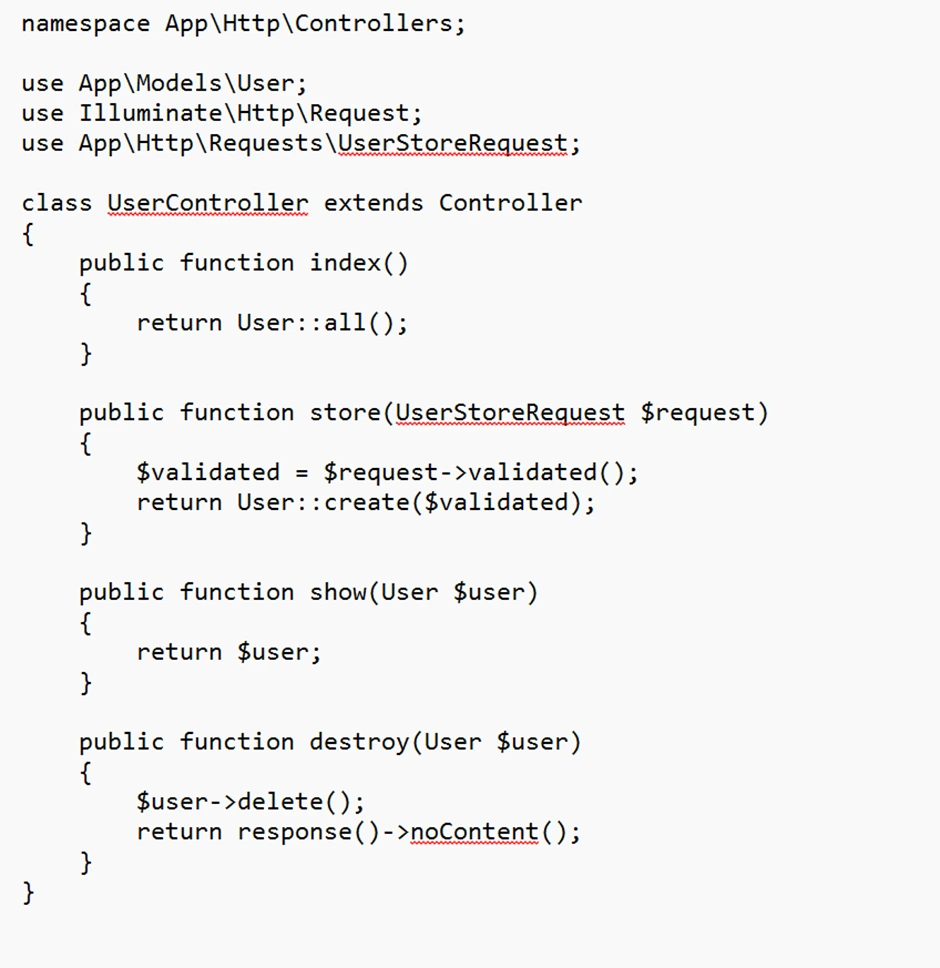
3. Implement the Strict Authentication and Authorization
You should never overlook security while building Laravel API. In Laravel, there are various authentication options, such as Passport, Sanctum, etc. Due to its simplicity and scalability, Laravel Sanctum is preferred. To maintain the API security for the single-page application, use Laravel Sanctum. Use middleware to secure sensitive routes. You can even use role-based access control through Policies and Gates.
Check the example below that explains the code for how you can protect routes using Sanctum Middleware.

4. Standardize API Response
It is one of the best practices for Laravel API development. Use Laravel’s built-in helpers and API resources to simplify and transform data structures and models into JSON responses. For the error handling, use the HTTP status code. You must return structured messages for the case’s success and failure. If you’re thinking about how to do it, Here is the code example.
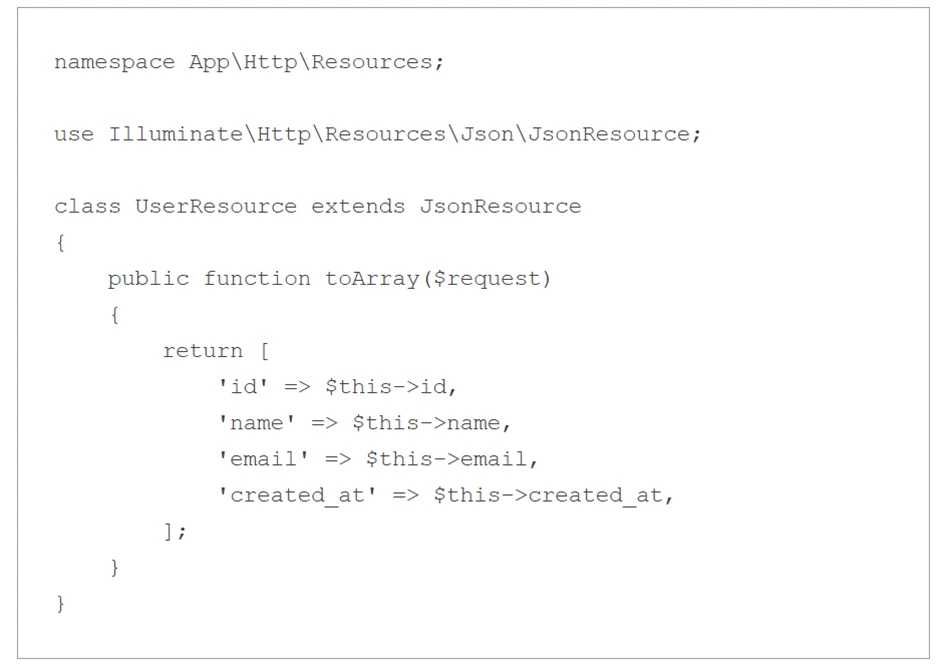
Now, in the controller, return the UserResource for consistent response.

5. API Performance Should Be Optimized
These days, users expect lightning-fast response from the APIs. That’s why you must do performance optimization. Laravel provides various methods to enhance API performance, such as database optimization, caching, and query optimization. Eager Loading can help you reduce the number of database queries. If you want to minimize response time, implement Query Coaching and Route Caching. Laravel Queues can help you handle background tasks asynchronously. Check out this example of Eager Loading, which helps improve performance.

It minimizes database queries and offers faster API responses.
6. Do Versioning of Your APIs
It is important and best practice to ensure that API remains compatible with the previous version as it evolves. To version your API, Laravel supports prefixing route with version numbers. Therefore, you can easily introduce new changes without breaking existing functionalities. You can prefix the route with v1, v2, which indicates different API versions. You should use the separate controller namespace for each version. Make use of a separate controller namespace for each version.
Here is the code example of how to version your APIs.
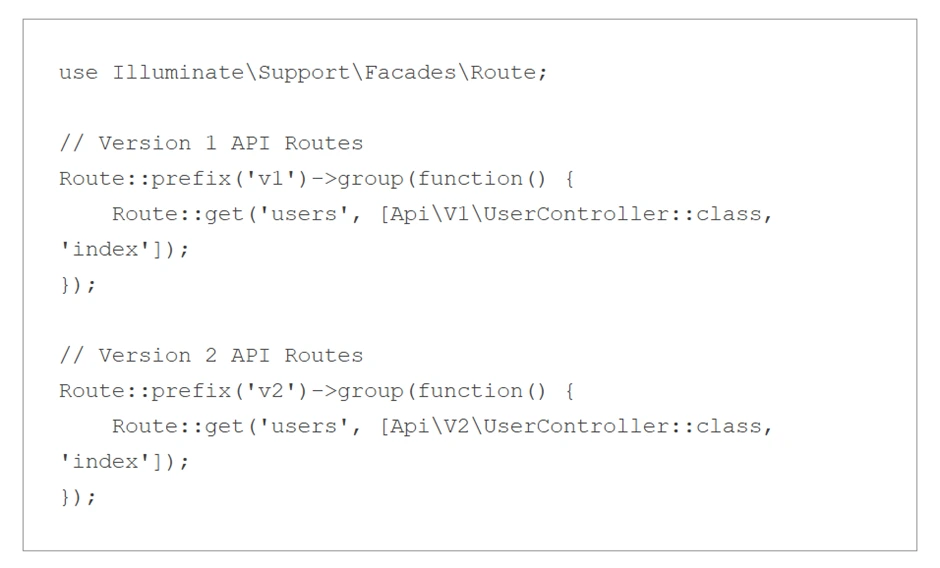
7. Use Laravel’s Exception Handling for APIs
During Laravel API development, it is essential to handle errors gracefully. Luckily, Laravel offers a complete exception-handling mechanism. It includes avoiding sensitive error details and providing meaningful error messages. You should use custom exceptions for each error scenario. You should also implement a global exception handler in
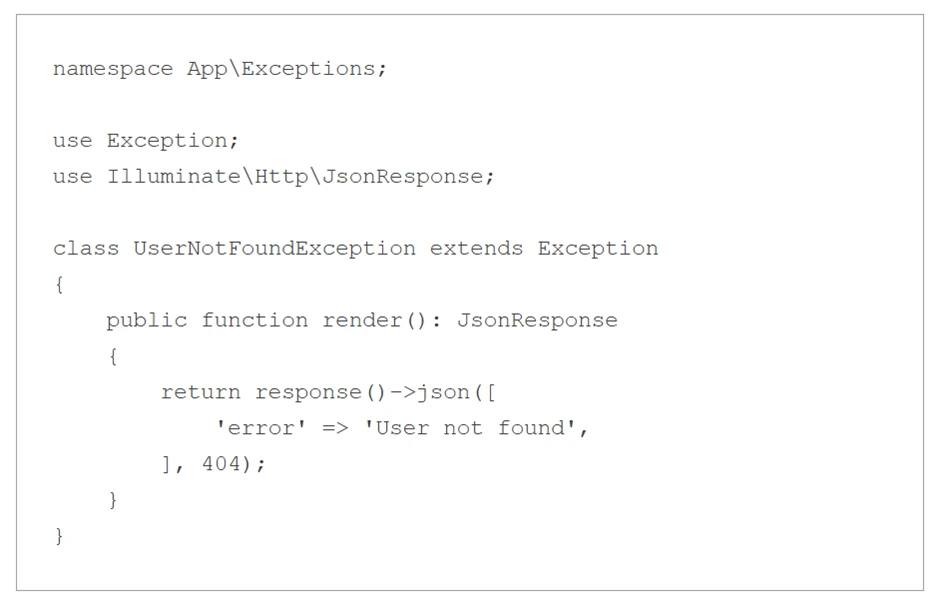
What are the Best Methods for Handling API Validation and Error Handling?
API Validation and Error Handling are important to create robust APIs. Laravel has a built-in feature that simplifies the process.
1. Validation
Laravel’s FormRequest class can effectively handle the input validation. You don’t need to validate the logic in the controller. Instead of it, you can centralize your logic in the request classes.
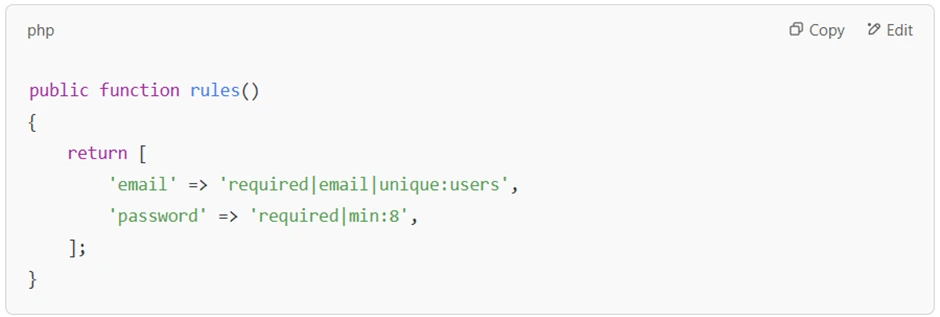
2. Error Handling
You can use Laravel’s class to customize error responses. For example, you can create a user-friendly JSON response for exceptions like this:
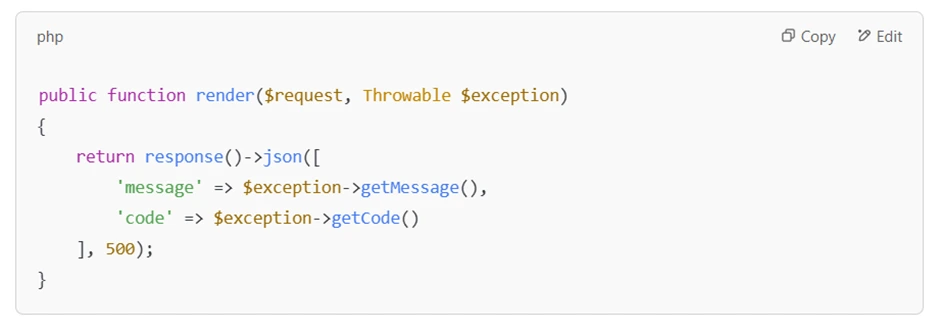
Besides, for better error handling, you should use descriptive error messages. Log errors through Laravel’s logging system for the debugging purpose. Standardize response format, such as always return JSON.
How Can You Optimize Laravel API Performance in 2025?
If you want to improve the speed and responsiveness of your API, the following optimization techniques can be helpful.
- You should use a catching mechanism like Redis or Memcached to temporarily store frequently accessed data. Therefore, you don’t need to do redundant calculations. Caching improves response time and offers an efficient API experience to users.
- You can optimize queries using Eloquent’s lazy loading and eager loading. Use techniques such as indexing, avoid unnecessary joins and select only necessary fields. It speeds up the query execution and improves the overall speed of Laravel API. Also, avoid N+1 query problems by preloading data whenever it is required.
- Implement a throttling mechanism that helps regulate API request rates and ensure fair usage. You should use queues for time-consuming tasks to improve API responsiveness and scalability.
- Use tools such as Laravel Telescope or Clockwork to track performance bottlenecks.
- You can use middleware such as gzip compression, reduce the size of API responses, and improve speed.
How to Implement API Testing in Laravel for Reliable Delivery
API testing offers consistent and reliable results. Laravel has built-in tools such as PHPUnit and HTTP testing for it. By conducting unit testing, you can test the individual API components. For example,
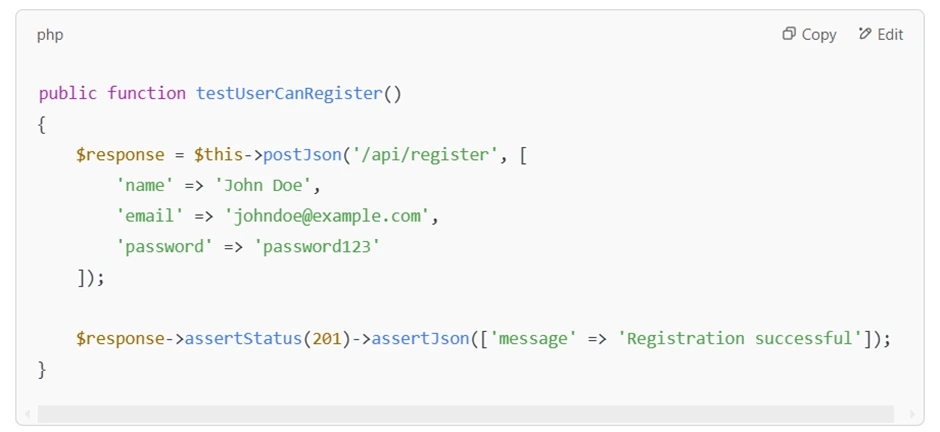
You can even conduct feature testing. It checks how different components work together.
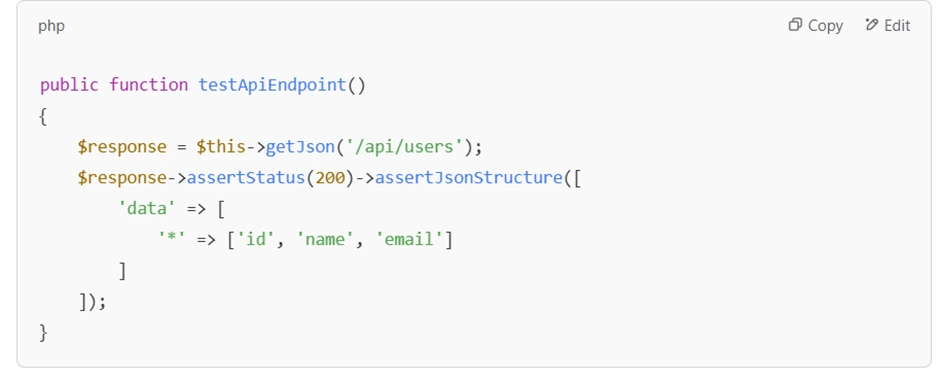
Besides, you can even mock external API through Laravel’s HTTP client and make sure your tests remain reliable.

Bottom Line
By following the above-discussed Laravel best practices, you can build a well-structured, secure, and easy-to-maintain Laravel API. These tips and tricks will help you write more efficient code, which will provide a better user experience. Remember that to develop a successful API, the foundation of Laravel architecture must be robust. It can power your applications and integrations for a long time.
We, Pranshtech Solutions, have years of experience in Laravel application development. With the right tools, resources, and best practices, we help you create powerful Laravel applications that will stand the test of time.




 Kishan Patel
Kishan Patel 